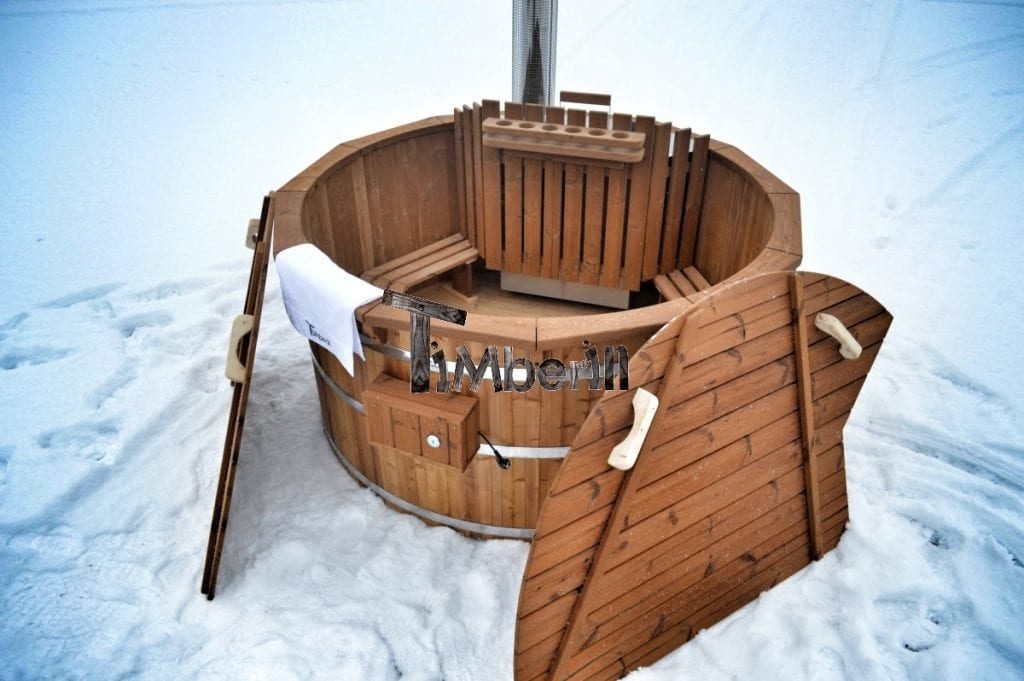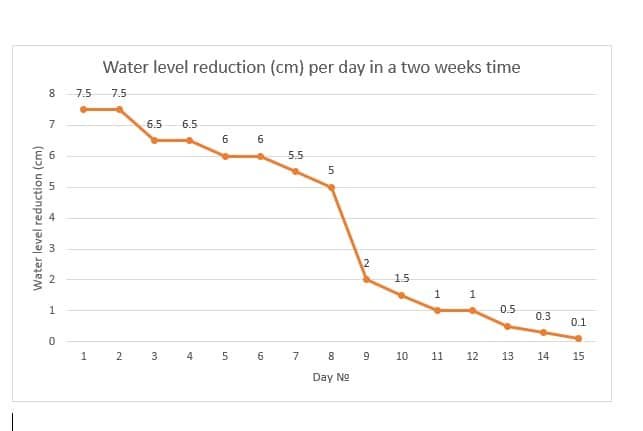Fully wooden, traditional hot tubs are the timeless classics of spa design. Their natural charm and cozy aesthetic are unmatched — but with that authenticity come a few practical challenges. The most common one? Water leakage. Before the age of fiberglass and polypropylene inserts, wood was the only available material for hot tub shells. Because of its natural structure, wood expands and contracts with moisture changes, which can lead to gaps or small leaks over time.
Common Causes of Wooden Hot Tub Leaks
While natural wood movement is the most typical cause of leaks, other factors may also contribute:
- Use of strong hot tub chemicals that dry or damage the wood
- Incorrect base or unstable ground preparation
- Manufacturing flaws or improper sealing of joints
- Physical damage from impacts or improper handling
- Rarely, biological causes such as pests or mold

Step-by-Step: How to Seal a Leaking Wooden Hot Tub
When you receive a new wooden hot tub, it’s normal for minor gaps to appear before the wood swells. Follow these steps to help the wood fully expand and naturally seal itself:
- Fill the tub with water and keep it topped up for several days to let the wood saturate.
- Monitor daily – water levels may drop slightly as the wood expands.
- Depending on wood type and weather, full sealing can take anywhere from a few days to two weeks.
Below are results from our TimberIN leak test — showing how water loss and water level changes stabilize within two weeks of proper soaking.
| Day № | Water loss (liters) | Water level reduction (cm) |
| 1 | 81 | 7.5 |
| 2 | 81 | 7.5 |
| 3 | 77 | 6.5 |
| 4 | 72 | 6.5 |
| 5 | 68 | 6 |
| 6 | 66 | 6 |
| 7 | 58 | 5.5 |
| 8 | 52 | 5 |
| 9 | 21 | 2 |
| 10 | 16 | 1,5 |
| 11 | 10 | 1 |
| 12 | 9 | 1 |
| 13 | 6 | 0,5 |
| 14 | 3 | 0,3 |
| 15 | 1 | 0,1 |


Two Effective Methods to Fix Persistent Leaks
If small leaks remain after the wood expansion process, you can seal them using one of the following methods:
- 1️⃣ Sawdust paste method: Mix fine sawdust with a little water to form a paste. With the hot tub full of water, press the paste into the leaking areas. The internal water pressure will draw it into the gaps, where it swells and seals the leaks naturally.
- 2️⃣ Silicone sealant method: Use a wood-colored, waterproof silicone on a completely dry surface. Apply it to the leak area, allow it to cure, and refill the tub to test the seal.
Preventive Care Tips
- Keep your wooden tub filled or at least damp to avoid wood shrinkage.
- Minimize strong chemical use; opt for chemical-free UV water systems.
- Ensure your base is solid and well-drained to prevent moisture pooling (see sunken hot tub installation guide).
- Check wood regularly for cracks or pest damage.
FAQ: Common Wooden Hot Tub Questions
How to make a wooden hot tub?
To make a wooden hot tub, assemble interlocking planks to form the sides, bottom, and lid. Add a heating element such as a wood-fired stove or electric heater.
How to seal a wooden hot tub?
Mix sawdust with water to create a paste and apply it to the leaks while the tub is full. Alternatively, use wood-colored waterproof silicone on a dry surface and let it cure before refilling.

